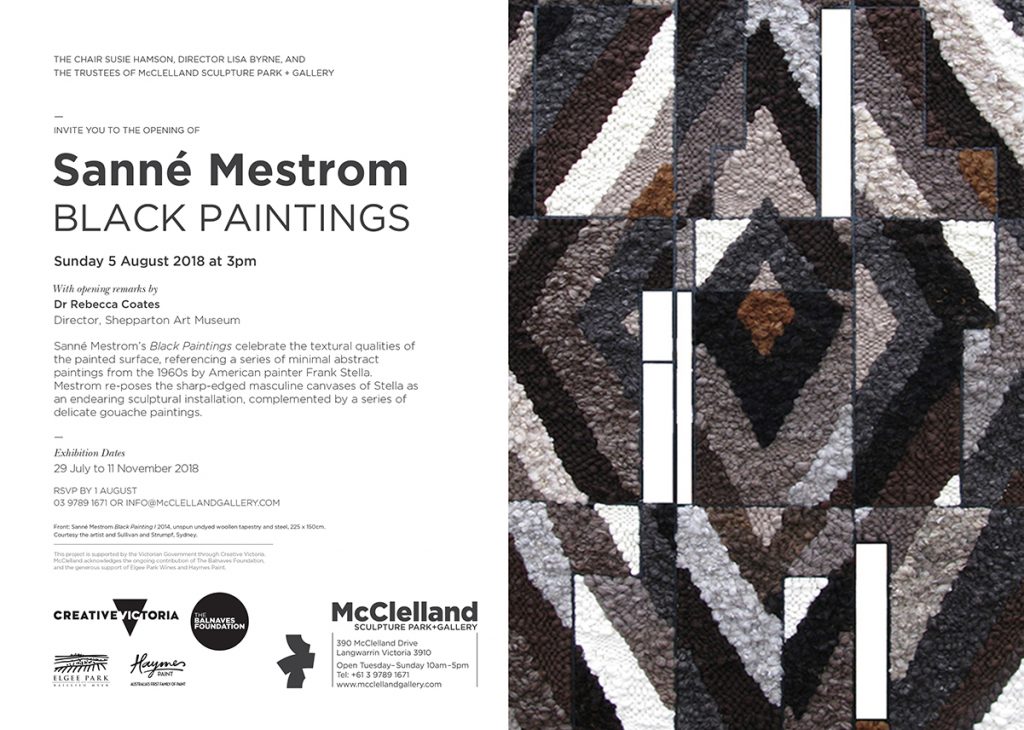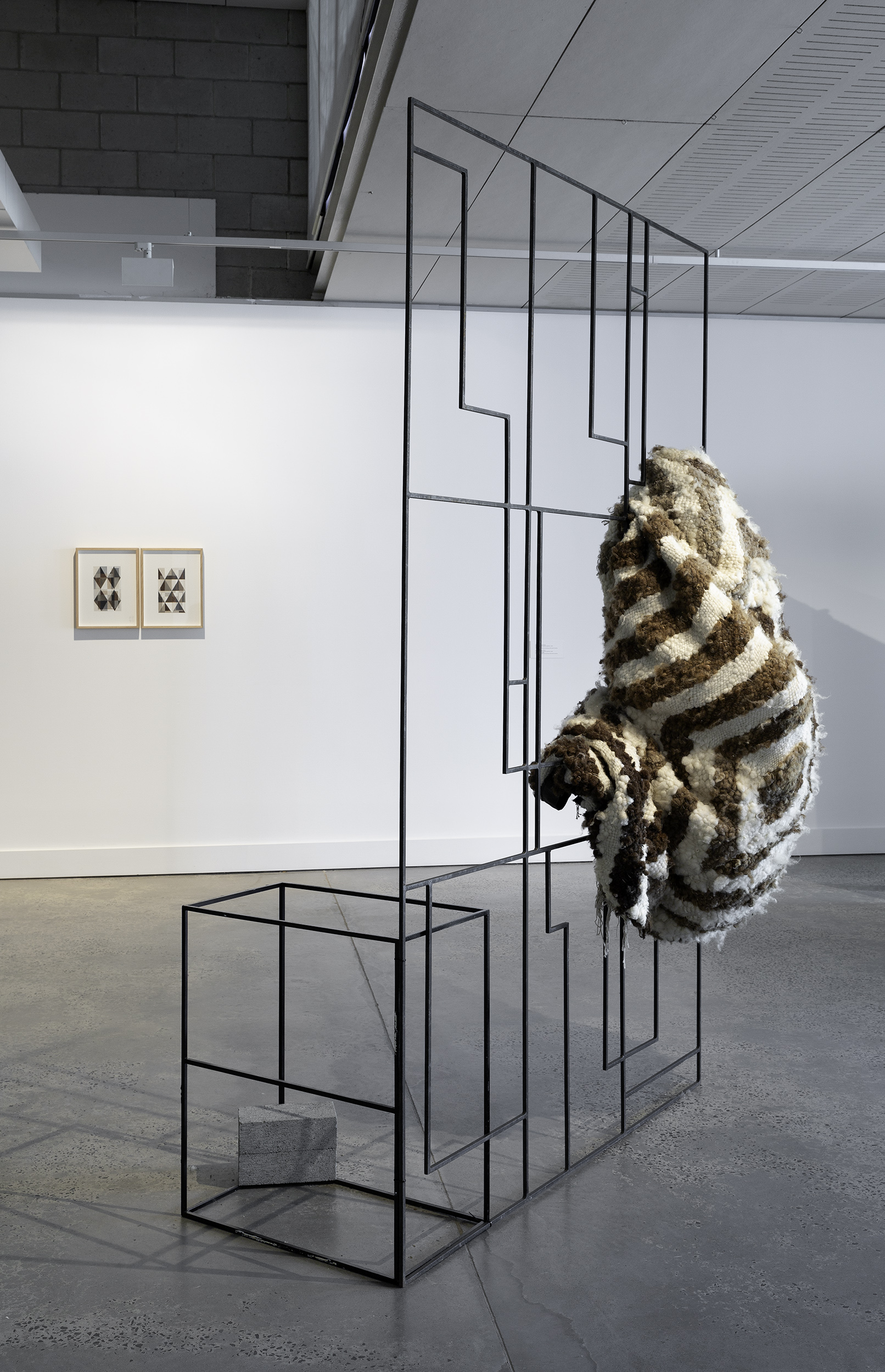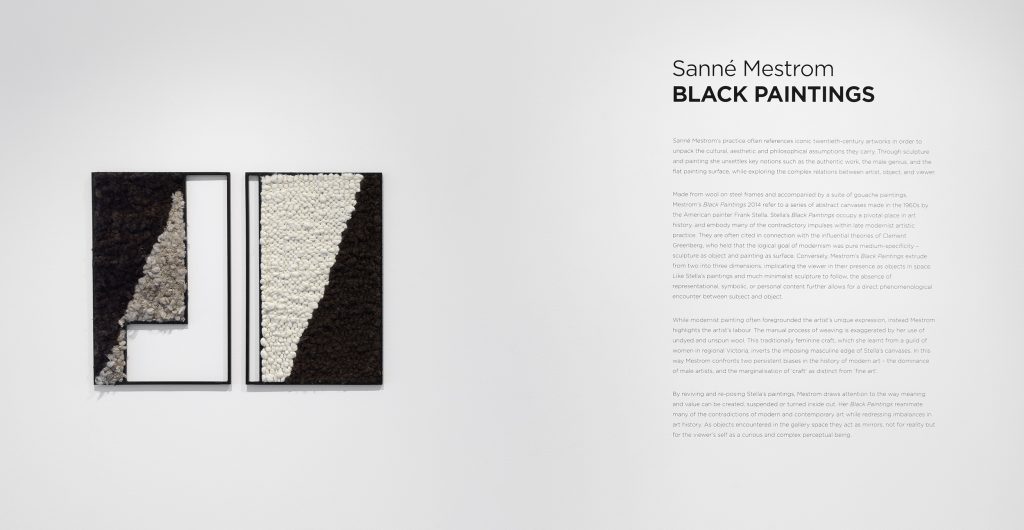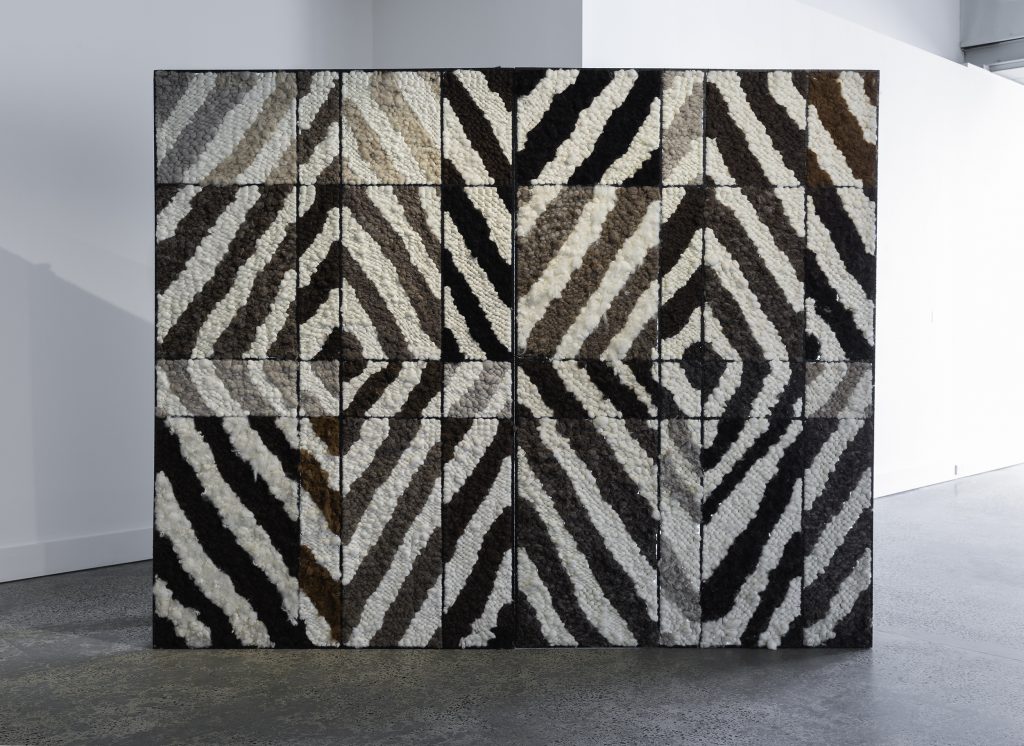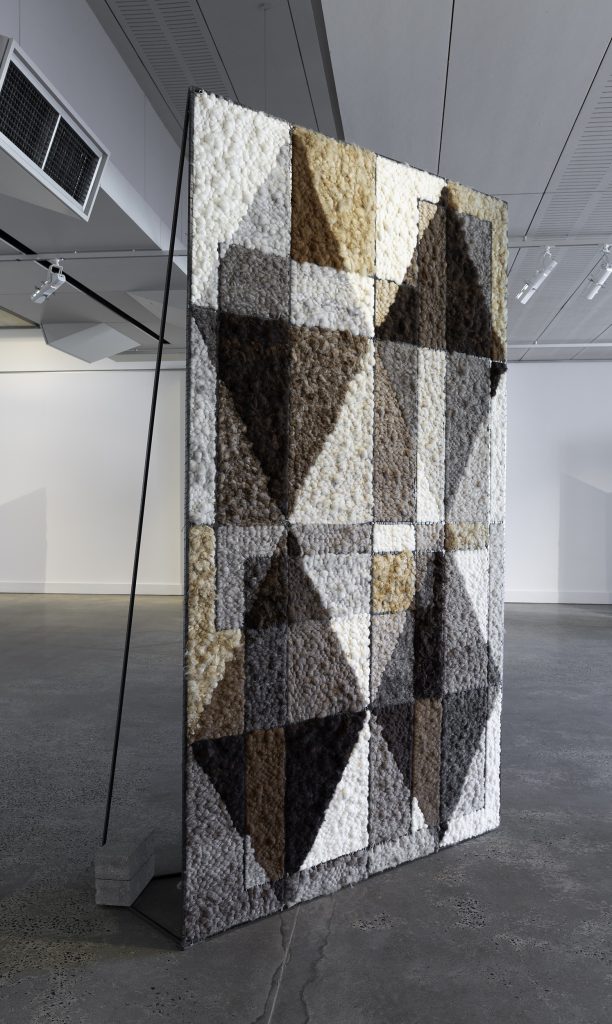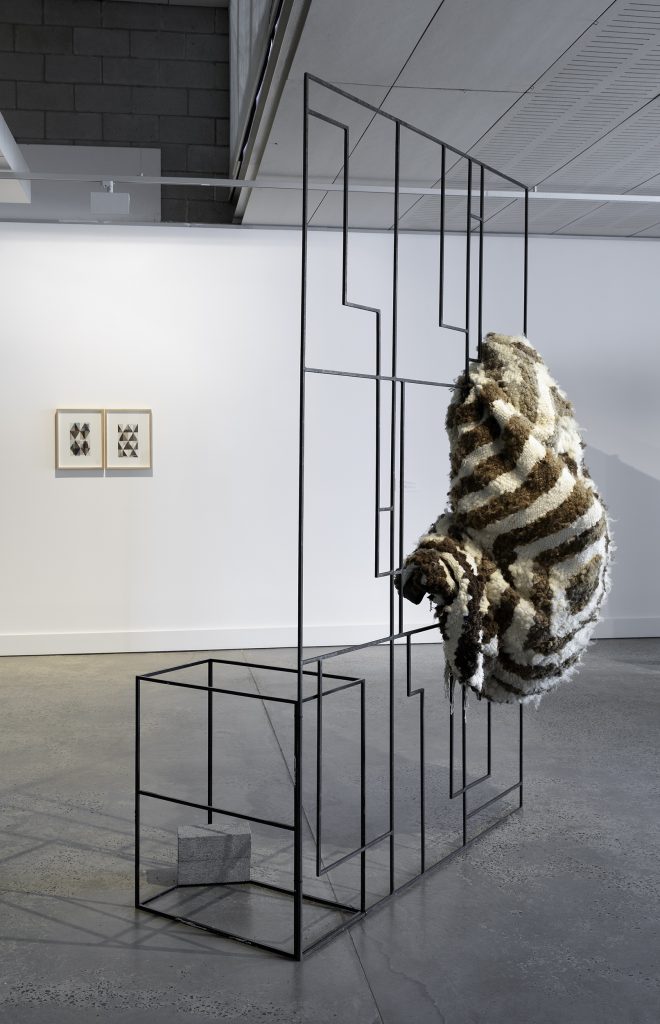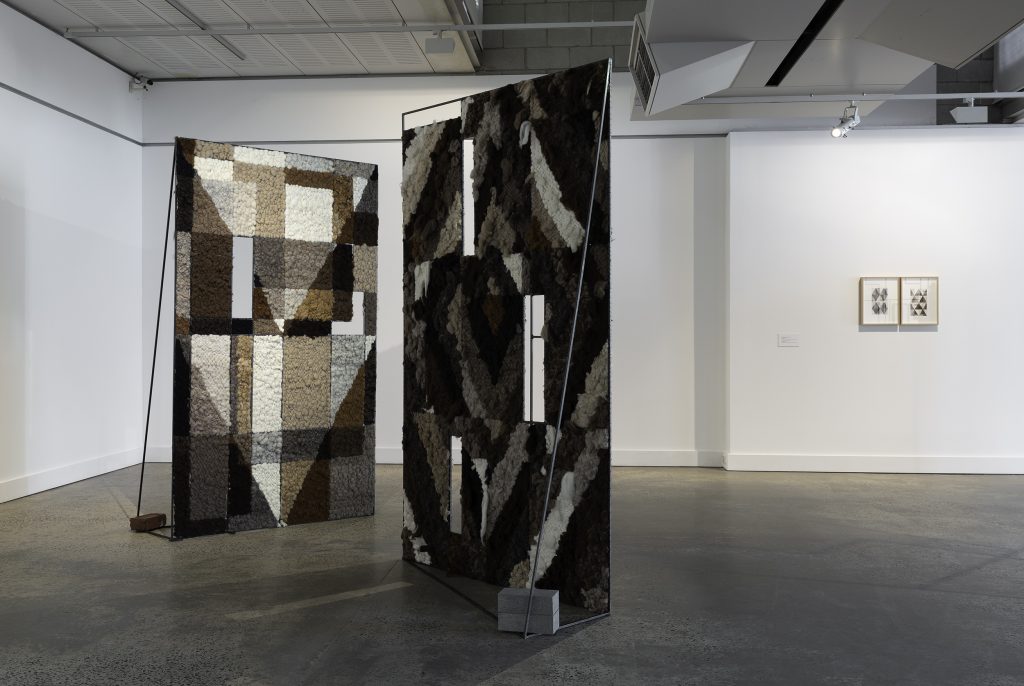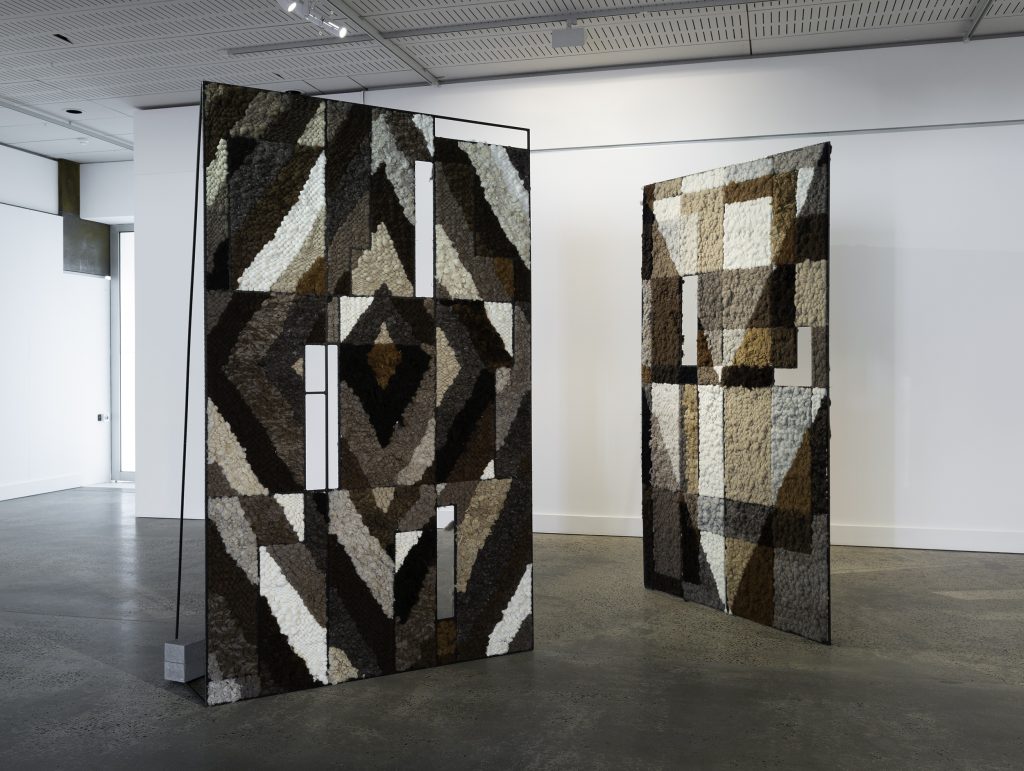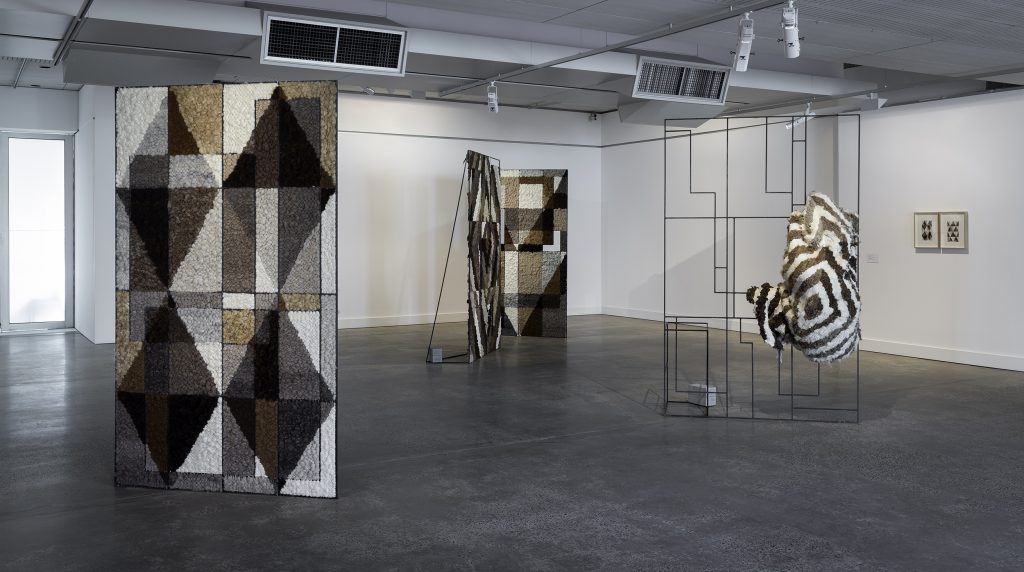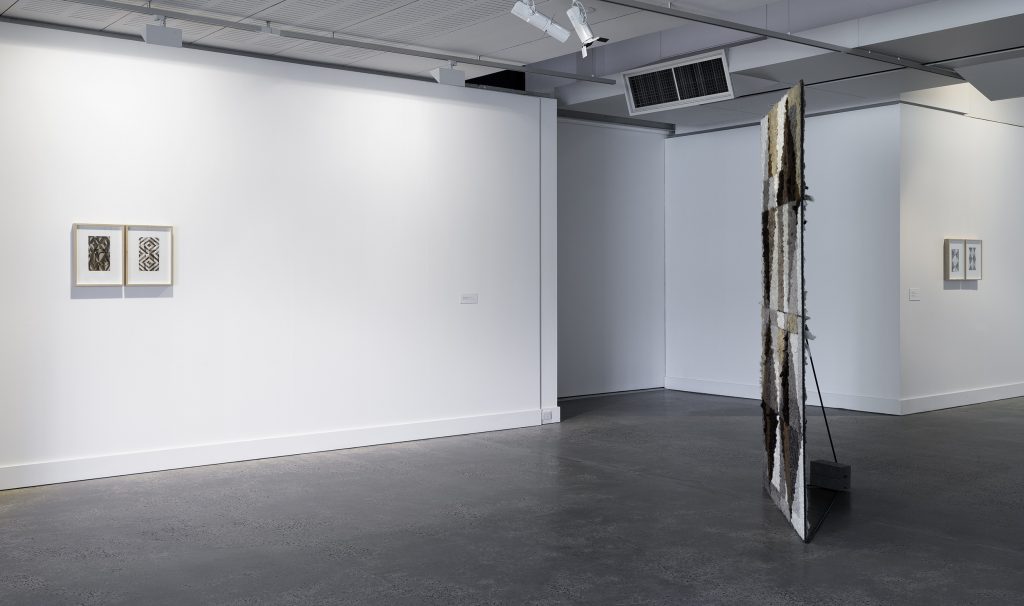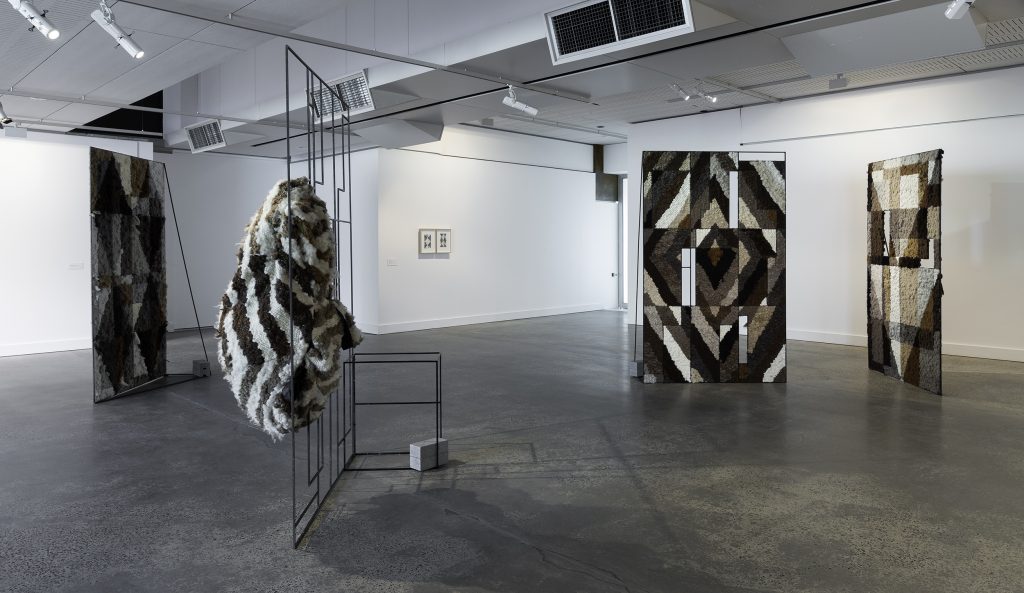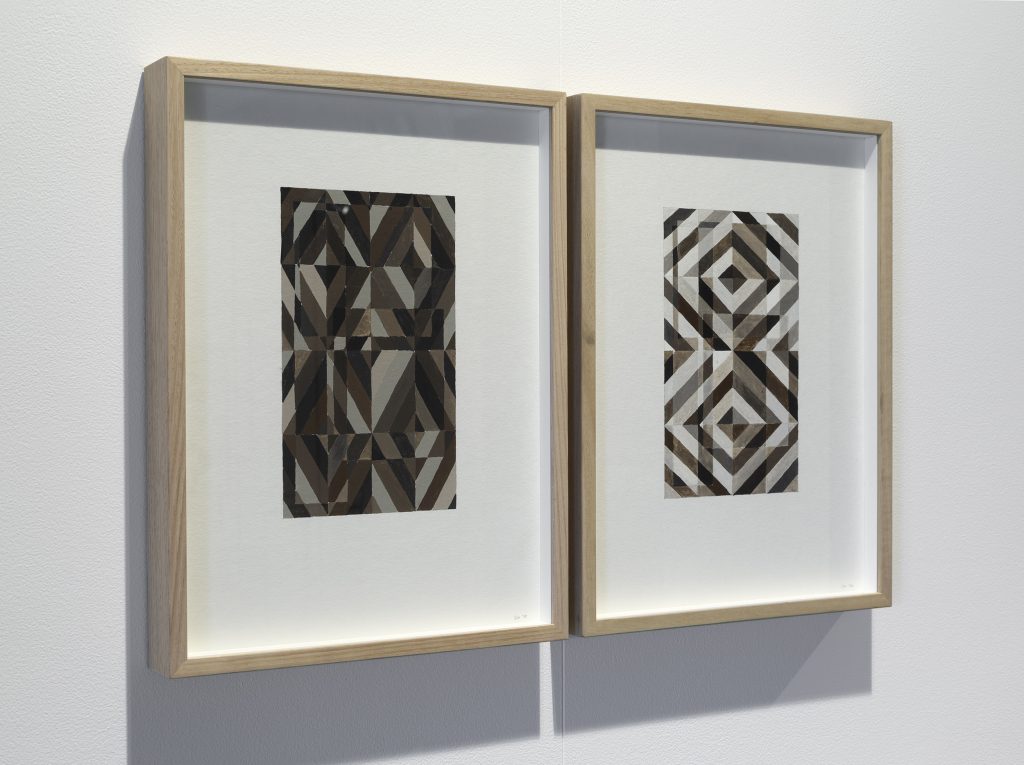In 1961, Ad Reinhardt described his Black Paintings:
‘A square (neutral, shapeless) canvas, five feet wide, five feet high, as high as a man, as wide as a man’s outstretched arms (not large, not small, sizeless), trisected (no composition), one horizontal form negating one vertical form (formless, no top, no bottom, directionless), three (more or less) dark (lightless) no–contrasting (colorless) colors, brushwork brushed out to remove brushwork, a matte, at, free–hand, painted surface (glossless, textureless, non–linear, no hard-edge, no so edge) which does not re ect its surroundings—a pure, abstract, non– objective, timeless, spaceless, changeless, relationless, disinterested painting—an object that is self–conscious (no unconsciousness) ideal, transcendent, aware of no thing but art (absolutely no anti–art).’
Mestrom’s practice draws on iconic twentieth-century modernist artworks, exploring how value is accorded to art historical objects and how such objects are always tied to their cultural and art historical contexts. rough replication, appropriation and disruption, her work filters historical mythologies through their own systems of reference, questioning notions of lineage, originality and influence, further altered through Mestrom’s experience of making. Mestrom, in other words, makes new cultural and art historical contexts for these objects in order to assess them in a new light. Mestrom’s latest body of work revolves around Frank Stella’s Black Painting series, while also referencing Ad Reihardt’s series of the same name. Her works follow Stella’s formalist exploration of the at surface, unpacking his principles ‘literally’ so that the flat becomes form again, weaving the ‘canvas’ into a sculptural tapestry.
